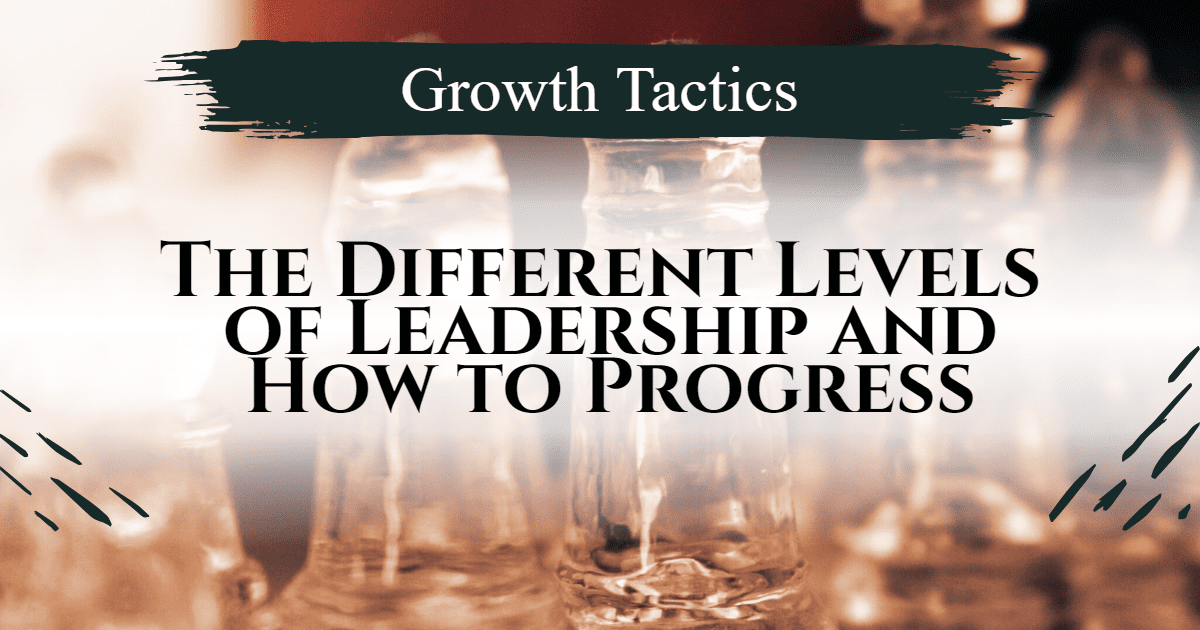Leadership is a crucial skill that can greatly impact success in both personal and professional settings. Renowned leadership expert John Maxwell has identified 5 Levels of Leadership that serve as a roadmap for leadership development. In this article, we will explore each level and provide actionable strategies for progressing from one level to the next.
By understanding and applying these principles, you can unlock your leadership potential and become an influential leader. Join us on this journey as we delve into the different levels of leadership and how to progress.
Jump To Section
The 5 Levels of Leadership by John Maxwell
John Maxwell’s 5 Levels of Leadership provides a structured framework to understand the progression of leadership skills and abilities. Each level represents a distinct stage in the leadership journey, with level 1 being the starting point and level 5 being the pinnacle of leadership excellence. Let’s explore each level in detail:
-
Level 1: Position
At this initial level, leadership is based solely on the title or position held. People follow because they have to, not necessarily because they want to. Level 1 leaders focus on learning their roles and responsibilities and establishing their authority. -
Level 2: Permission
Moving beyond the position, level 2 leaders start to build relationships and gain the trust and respect of their team members. They understand that leadership is not just about authority but also about forming connections and creating a positive work environment. -
Level 3: Production
Level 3 leaders prioritize achieving tangible results. They focus on setting goals, solving problems, and ensuring efficiency in their work. By consistently delivering successful outcomes, level 3 leaders gain influence and credibility among their team members. -
Level 4: People Development
Level 4 leaders understand the importance of investing in the growth and development of their team members. They prioritize mentoring, coaching, and empowering others to reach their full potential. By developing individuals, level 4 leaders create a strong and capable team. -
Level 5: Pinnacle
At the highest level of leadership, level 5 leaders not only achieve remarkable results but also leave a lasting legacy. They lead with purpose and inspire others through their influence. Level 5 leaders focus not only on their own success but also on developing other leaders who can continue the legacy.
Progressing through each level requires a combination of self-awareness, continuous learning, and the acquisition of new leadership skills. It’s important to understand that leadership is not fixed but can be developed and improved over time. By embracing the different levels of leadership, individuals can advance their skills and make a greater impact in their roles.
In the next section, we will discuss how to advance through the levels of leadership and provide strategies for personal growth and development on the leadership journey.
Advancing Through the Levels of Leadership
Advancing through the different levels of leadership requires intentional effort and continuous growth. Here are some strategies to help you progress on your leadership journey:
I. Invest in Self-Awareness
Advancing through the levels of leadership begins with investing in self-awareness. It is crucial to understand your strengths, weaknesses, and areas for improvement. By engaging in self-reflection and seeking feedback from others, you gain valuable insights into your leadership style and identify areas where you can grow.
Self-awareness allows you to build on your strengths and leverage them to your advantage as a leader. It also helps you understand your weaknesses and develop strategies to overcome them. Being aware of your blind spots and limitations enables you to make better decisions and seek support or guidance when needed.
To invest in self-awareness, take the time to reflect on your leadership experiences, analyze your strengths and weaknesses, and assess your leadership style. Seek feedback from your team members, peers, and mentors to gain different perspectives and identify areas for improvement. By continuously investing in self-awareness, you can develop a deeper understanding of yourself as a leader and make intentional efforts for growth.
II. Continuously Learn and Develop
Continuous learning and development are essential for advancing through the levels of leadership. Leadership is an ongoing journey, and committing to lifelong learning is crucial for staying relevant, expanding your knowledge, and improving your leadership skills.
There are various ways to continuously learn and develop as a leader. Read leadership books and publications to gain insights from experienced leaders and industry experts. Attend workshops, seminars, conferences, or leadership development programs to broaden your perspectives and learn new strategies and techniques.
Seek out mentorship from more experienced leaders who can provide guidance, support, and valuable insights based on their own experiences. Actively seek opportunities to learn from your team members and colleagues, as they may have valuable knowledge and ideas to share.
Additionally, consider pursuing further education or certifications in relevant areas to deepen your expertise. By continuously learning and developing, you can enhance your leadership abilities, stay ahead of industry trends, and adapt to changing circumstances effectively.
III. Build Meaningful Relationships
Building meaningful relationships is a fundamental aspect of effective leadership. Developing strong connections with your team members and colleagues establishes a foundation of trust, respect, and collaboration, enabling you to lead more effectively.
Show genuine care and concern for the well-being and success of those around you. Get to know your team members on a personal level, understand their aspirations, and support their professional growth and development. Actively listen to their concerns, ideas, and suggestions, and provide them with guidance and mentorship when needed.
Building trust and rapport with others requires open and honest communication. Encourage open dialogue, express appreciation for their contributions, and provide recognition for their achievements. Create a supportive and inclusive work environment where everyone feels valued and empowered to contribute their best.
By building meaningful relationships, you foster a positive team dynamic, improve morale, and increase overall productivity. These relationships also provide you with a network of support and collaboration, enabling you to lead more effectively.
IV. Set Clear Goals and Lead by Example
Setting clear goals and leading by example are essential aspects of advancing through the levels of leadership. As a leader, it is your responsibility to establish clear and attainable goals for yourself and your team.
Clearly articulate the goals, objectives, and expectations, ensuring that everyone understands the desired outcomes. This clarity helps align the team’s efforts toward a common purpose and ensures that everyone is working towards the same objectives.
As a leader, you must lead by example. Consistently demonstrate the qualities and behaviors you expect from others. Model professionalism, integrity, and ethical conduct. Show dedication, resilience, and a commitment to excellence in your work.
Your actions have a profound impact on those around you. By setting an example of dedication, hard work, and continuous improvement, you inspire and motivate your team to do the same. Leading by example builds credibility, trust, and respect, and it encourages others to follow your lead.
V. Focus on Empowering Others
Advancing through the levels of leadership involves shifting your focus from individual success to empowering and developing others. As a leader, your role is to support your team members’ growth by providing opportunities for learning, delegating responsibilities, and fostering a culture of collaboration and innovation.
Empower your team members to take ownership of their work and make decisions. Encourage their professional development by providing training, mentoring, and coaching. Delegate relevant tasks and assignments, allowing them to develop new skills and gain valuable experience.
Create a culture that values and encourages collaboration and innovation. Emphasize teamwork, open communication, and the exchange of ideas. Encourage your team members to share their perspectives, insights, and suggestions, and provide a platform for their voices to be heard.
By focusing on empowering others, you create a supportive and inclusive environment where individuals feel valued, motivated, and inspired. This ultimately leads to improved team performance, increased engagement, and collective success.
VI. Embrace a Servant Leadership Mindset
Adopting a servant leadership mindset is a powerful way to advance through the levels of leadership. Servant leadership involves prioritizing the needs of your team above your own and serving as a resource and support system to help them succeed.
By putting your team’s needs first, you demonstrate your commitment to their growth and development. Show genuine care and empathy for their well-being. Be attentive to their concerns and challenges, and provide guidance and support to help them overcome obstacles.
A servant leader listens to their team members, values their input, and involves them in decision-making processes. By empowering others and enabling their success, you build trust, loyalty, and a sense of shared purpose within the team.
Let go of ego-driven behaviors and focus on serving others. By being humble, approachable, and accessible, you create an environment that fosters collaboration, productivity, and innovation. Embracing a servant leadership mindset strengthens your influence and impact as a leader.
VII. Seek Feedback and Adapt
Seeking feedback and adapting are vital for advancing through the levels of leadership. Actively seek feedback from your team members, peers, and superiors. Regularly check in with them to understand how you can improve your leadership style and enhance your effectiveness.
Create an environment that encourages open and honest feedback. Let your team members know that their input is valued and that their opinions will be taken seriously. Actively listen to their feedback and take it into account when making decisions or adjusting your approach.
Be open to learning from both successes and failures. Embrace a growth mindset that views challenges and setbacks as opportunities for growth and improvement. Analyze situations objectively, learn from your experiences, and make the necessary adjustments to your leadership style.
By seeking feedback and adapting, you demonstrate your commitment to continuous improvement and growth. This not only enhances your leadership abilities but also enhances trust, transparency, and collaboration within your team.
Advancing through the levels of leadership is a continuous journey. Keep challenging yourself, expanding your skills, and seeking opportunities to lead and make a positive impact. By consistently striving for growth and development, you will reach higher levels of leadership effectiveness and influence.
Conclusion
Leadership is a dynamic and ever-evolving journey. John Maxwell’s 5 Levels of Leadership provides a valuable framework for understanding the progression of leadership skills and abilities. Starting from a position of authority, leaders can advance through the levels by building relationships, achieving results, developing others, and ultimately leaving a lasting legacy.
To advance through the levels of leadership, it’s important to invest in self-awareness, continuously learn and develop, build meaningful relationships, set clear goals, empower others, embrace a servant leadership mindset, and seek feedback. By focusing on personal growth and intentionally developing leadership skills, individuals can become more effective leaders and make a positive impact on their teams and organizations.
Remember that leadership is not about a title or position, but about the ability to inspire and influence others towards a common goal. Each level of leadership represents a new opportunity for growth and development. Embrace the journey, embrace the challenges, and embrace the opportunity to become a transformational leader.
So, start your leadership journey today, and remember that leadership is not about reaching the pinnacle alone, but about lifting others along the way.








